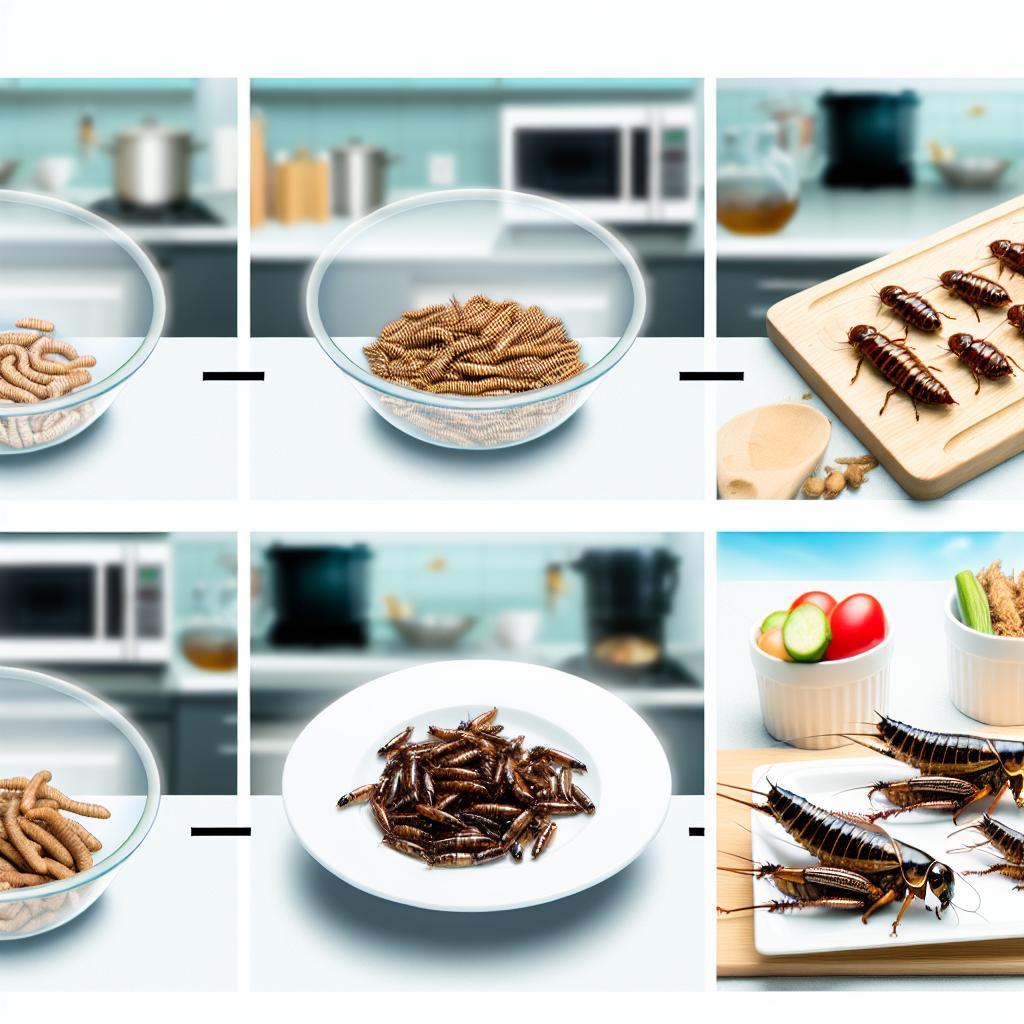The Rise of Insect-Based Foods
In recent years, the concept of using insects as an alternative food source has gained substantial traction. As the global population continues to grow at an unprecedented rate, traditional food sources strain under pressure to meet increasing demand. One solution that has emerged from this challenge is the consumption of insects. This method of food sourcing not only alleviates some of the pressure on conventional livestock systems but also offers numerous benefits, particularly from an environmental standpoint. Insects require substantially less land, consume fewer resources like water and feed, and emit considerably lower greenhouse gases compared to traditional livestock. These factors contribute to their identification as an environmentally sustainable alternative. Further enhancing their appeal is their nutritional value: insects are exceptionally rich in protein, fiber, vitamins, and minerals, making them a strong candidate for enhancing global food security.
Collection and Farming of Insects
The path from insect farming to consumption involves several detailed steps. Initially, insects can either be collected in the wild or farmed. While wild foraging has been practiced traditionally in some cultures, large-scale commercial production leans heavily toward farming insects in controlled environments. Crickets, mealworms, and black soldier fly larvae are particularly popular for farming due to their multiple advantages: they have comprehensive nutritional profiles and are relatively easy to cultivate. Their farming involves maintaining optimal conditions—temperature, humidity, and lighting—mimicking their natural habitats in order to optimize growth and ensure high-quality production. Remarkably, these insects are typically fed organic waste products, thus enhancing the sustainability quotient of insect farming by turning potential waste into a valuable resource.
Processing Methods
Once harvested, insects undergo a variety of processing techniques to prepare them for human consumption.
Cleaning and Sorting: The initial phase of processing involves cleaning the insects to eliminate debris and inedible components. Following cleaning, sorting is conducted to ensure uniformity of size and type, which is imperative for subsequent stages.
Killing Methods: The humane harvesting of insects often involves freezing, boiling, or blanching. These methods are carefully selected to not only humanely end the insects’ lives but also to maintain their nutritional integrity.
Drying: Post-killing, insects are subjected to drying techniques to extract moisture content. This step is vital for prolonging shelf life and inhibiting microbial growth. Depending on the intended use of the product, methods such as oven drying, solar drying, or freeze-drying are chosen.
Transformation into Food Products
After undergoing initial processing, insects can be consumed in their whole form or further transformed into various products. One prominent method involves grinding the dried insects into a fine powder known as insect flour, which then serves as a key ingredient in various foods such as protein bars, pasta, and baked goods.
Incorporating insects into diverse products like energy bars, snacks, and protein shakes is another innovative approach. The powdered form of processed insects provides a discrete way to include the nutritional benefits of insects in numerous dishes, making them more palatable to consumers who might otherwise be averse to their consumption.
Safety and Regulation
Ensuring safety in the production of insect-based foods is a critical aspect of their market introduction. Producers must adhere to rigorous safety guidelines, guaranteeing that the products are free from pathogens and allergens. While regulatory norms vary worldwide, authoritative bodies such as the European Food Safety Authority (EFSA) and the U.S. Food and Drug Administration (FDA) have established frameworks to guide the safe integration of edible insects into the marketplace.
The processing and consumption of insect-based foods represent a rapidly growing sector within the food industry. Driven by both sustainability concerns and nutritional benefits, the sector holds significant promise for addressing some of the critical challenges faced by modern agricultural systems. With continuous advancements in food technology and an increasing acceptance among customers, the role of insects as a vital component of the food supply is set to expand, offering an innovative solution to the pressing demands of global food security.

